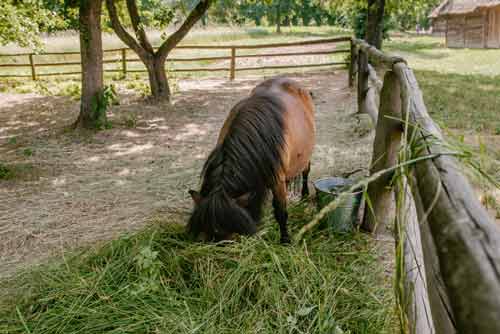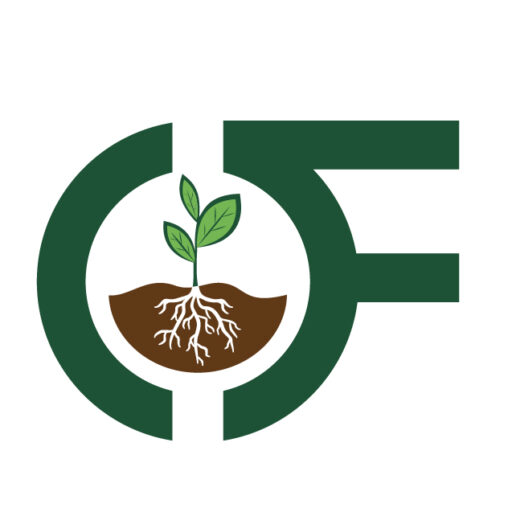Seasonal Hay Buying Guide: When and How to Purchase Hay for Year-Round Supply
At Ohana Farms, we understand the importance of providing high-quality hay for your livestock and pets throughout the year. Knowing when and how to purchase hay can make a significant difference in ensuring a consistent supply of nutritious feed for your animals. We’ll walk you through the best practices for buying hay, the importance of understanding hay season, and how local hay suppliers in the Pasco and Tri-Cities community play a crucial role in sustainable agriculture.

(Pony eats hay in the paddock)
Understanding Hay Season
Hay season refers to the periods of the year when hay is harvested and baled. When is hay season? These seasons can vary based on geographical location, climate, and the type of hay being produced. Generally, hay season in many regions occurs during the late spring, summer, and early fall when the weather conditions are optimal for growing and drying hay.
Knowing when hay season occurs is essential for planning your hay purchases. The primary hay bailing season typically starts in May and can extend through September. This period is when hay is at its peak nutritional value, as it’s harvested during its optimal growth stages. By aligning your purchases with the hay season, you can ensure that you are buying the freshest and most nutritious hay for your livestock.
When to Purchase Hay
Timing your hay purchases can help you take advantage of the best quality and prices. Here are some key periods to consider:
Early Season (May – June)
The early part of the hay season is ideal for purchasing high-quality hay. During this time, the first cut of hay, often referred to as “first cutting,” is available. First-cutting hay is usually rich in nutrients and has a good balance of protein and fiber, making it an excellent choice for most livestock. Buying hay early in the season ensures that you get fresh bales before the peak demand drives up prices.
Mid-Season (July – August)
Mid-season hay purchases can also yield high-quality hay, especially from the second cutting. The second cutting of hay tends to be leafier and may have a higher protein content. However, be mindful of weather conditions, as mid-season hay can sometimes be affected by inconsistent rainfall. Checking the hay for moisture content and mold is crucial during this period.
Late Season (September – October)
Late-season hay, including third and sometimes fourth cuttings, can still be of good quality but may vary depending on the weather. Purchasing hay in the late season can be beneficial if you need to top up your supply or if you missed earlier opportunities. However, it’s essential to inspect the hay for any signs of spoilage or decreased nutritional value. Here is a guide to buying hay in winter for your horses.
How to Purchase Hay for Year-Round Supply
To ensure a consistent supply of quality hay throughout the year, consider the following tips:
Estimate Your Needs
Start by estimating the amount of hay your livestock will need for the entire year. Factors to consider include the number of animals, their dietary requirements, and the length of time they will need to be fed hay. A general rule of thumb is that a horse will consume about 2-2.5% of its body weight in hay per day. Calculating these needs in advance will help you plan your purchases more effectively.
Buy in Bulk
Buying hay in bulk can save you money and ensure that you have a steady supply. Purchasing large quantities during the peak of hay season when prices are lower can help you avoid the higher costs typically seen in the off-season. Make sure you have adequate storage facilities to keep the hay dry and protected from the elements.
Diversify Your Hay Sources
Relying on multiple suppliers can help you secure a consistent supply of hay. Different suppliers may have hay available at different times, and diversifying your sources can reduce the risk of running out. Building relationships with local hay suppliers like Ohana Farms ensures you have access to fresh, high-quality hay when you need it.
Inspect Before You Buy
Always inspect hay before purchasing, especially if you’re buying in bulk. Look for signs of mold, dust, and discoloration, which can indicate poor quality or spoilage. High-quality hay should be green, have a fresh smell, and be free from weeds and foreign objects. If possible, ask for a nutritional analysis to ensure the hay meets your livestock’s dietary needs.
Store Properly
Proper storage is crucial to maintaining the quality of your hay supply. Store hay in a dry, well-ventilated area away from direct sunlight. Pallets or tarps can be used to keep hay off the ground and prevent moisture from seeping in. Regularly check stored hay for any signs of spoilage and rotate bales to use older hay first.
The Role of Local Hay Suppliers in Pasco & Tri-Cities Community
Local hay suppliers are vital in providing quality hay and supporting sustainable agricultural practices in the Pasco and Tri-Cities community. Here’s how they contribute:
Supporting Local Economy
Buying hay from local suppliers like Ohana Farms helps support the local economy. It keeps money within the community, creates jobs, and fosters economic growth. Local farmers and suppliers are more likely to reinvest in their operations, leading to improved quality and sustainability.
Reducing Carbon Footprint
Local hay suppliers reduce the carbon footprint associated with long-distance transportation. By sourcing hay locally, you minimize the environmental impact of shipping and ensure fresher hay for your animals. This practice aligns with sustainable agriculture principles and helps protect the environment.
Promoting Sustainable Practices
Local hay suppliers often engage in sustainable farming practices that benefit the community and the environment. At Ohana Farms, we prioritize crop rotation, organic fertilizers, and water conservation to produce high-quality hay while preserving the land. Supporting local suppliers who practice sustainability helps promote a healthier ecosystem and ensures the longevity of agricultural resources.
Building Community Relationships
Local suppliers build strong relationships within the community, fostering trust and reliability. At Ohana Farms, we value our connections with customers and neighbors, offering personalized service and support. Being part of a close-knit community allows us to better understand and meet the needs of local livestock owners.
Conclusion
Planning your hay purchases around the hay season and understanding the best times to buy can ensure a year-round supply of high-quality feed for your livestock. By estimating your needs, buying in bulk, diversifying your sources, and properly storing your hay, you can maintain a consistent and nutritious feed supply. Additionally, supporting local hay suppliers like Ohana Farms not only guarantees fresh and sustainable hay but also strengthens the Pasco and Tri-Cities community.
At Ohana Farms, we are committed to providing top-quality hay through sustainable practices and strong community ties. Trust us to be your reliable source for year-round hay supply, and experience the benefits of choosing local. Thank you for considering Ohana Farms for your hay needs, and we look forward to serving you and your animals with the best quality feed.
By following this seasonal hay buying guide, you can ensure that your livestock receive the nutrition they need, and you can contribute to a more sustainable and connected community.

